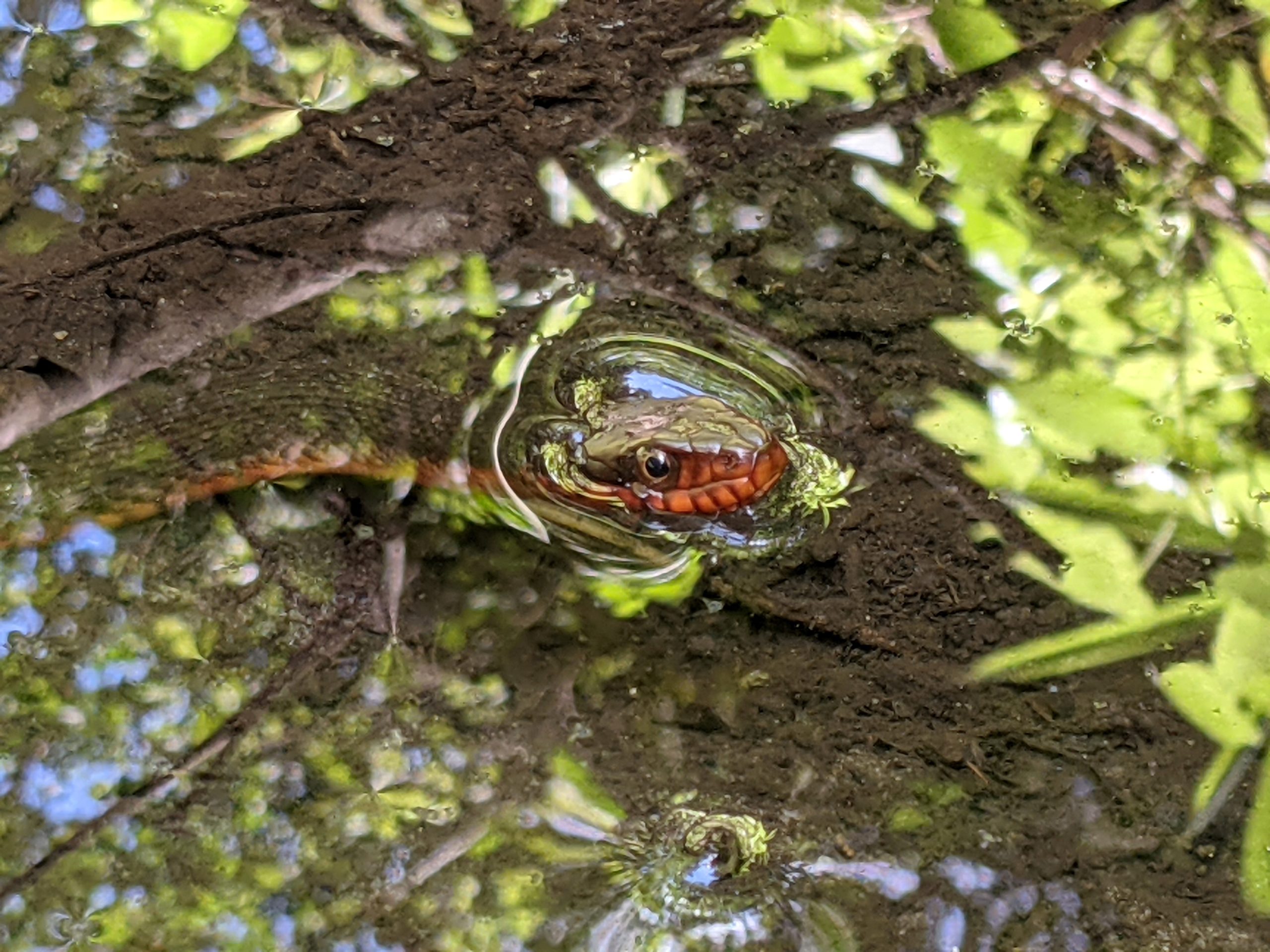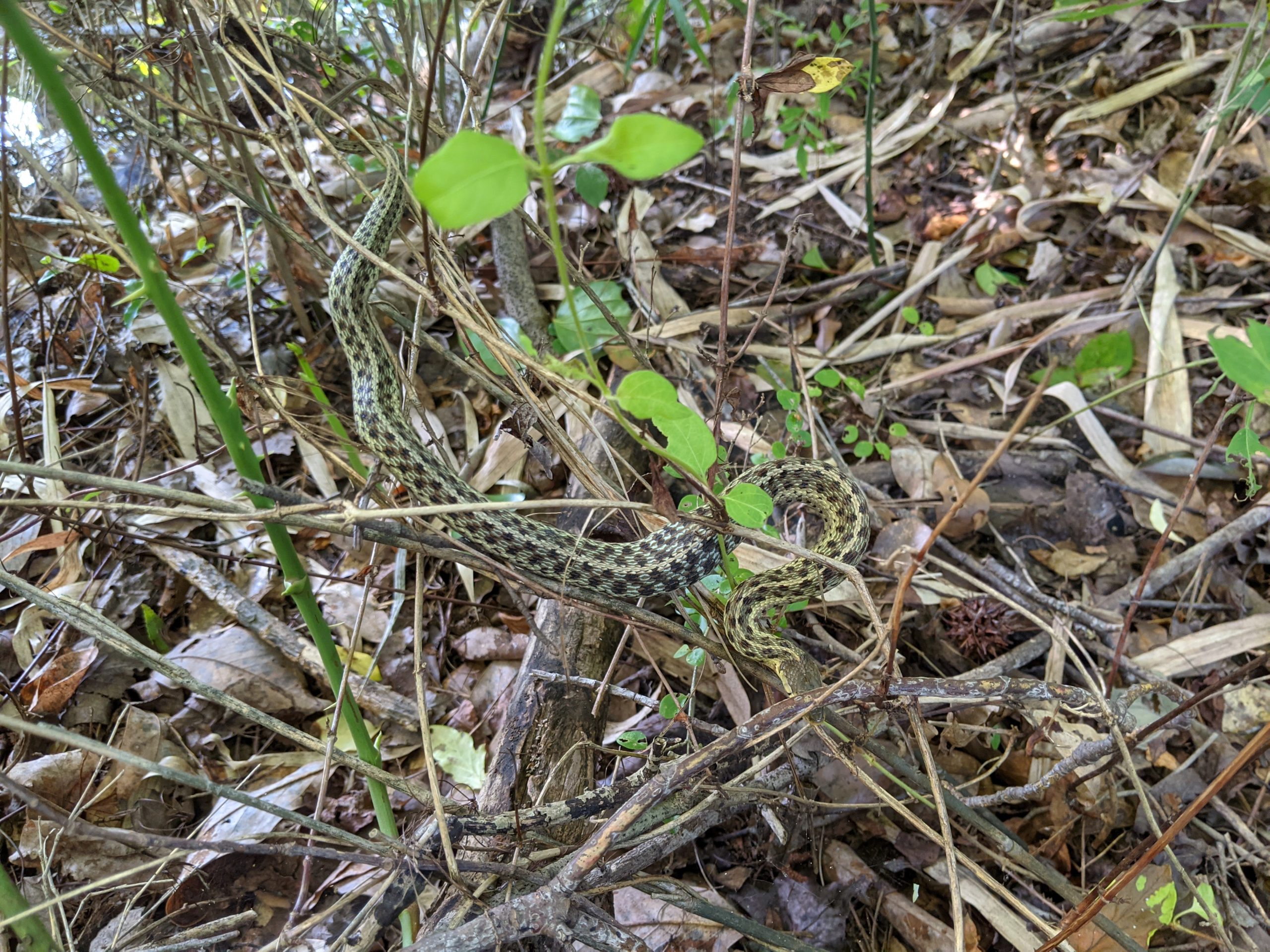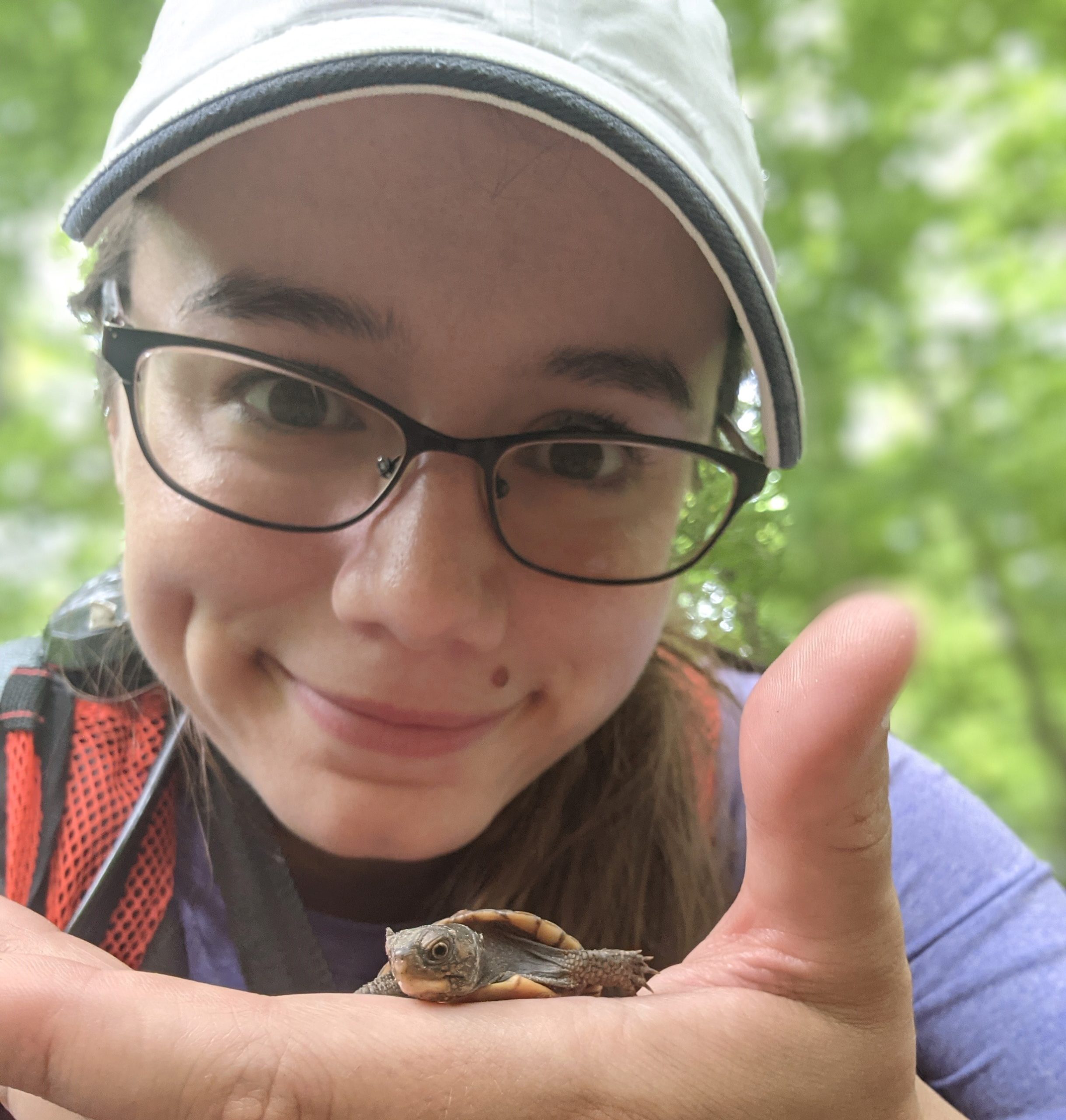As World Snake Day approaches on July 16, I thought it would be neat to catch up with Morgan Gilbert of our Raleigh Environmental group for some tips and tricks on how to manage snakes in the wild this summer.
Wetland delineation and habitat assessments are prominent parts of Morgan’s role as an environmental technician. In her job, Morgan assists on identifying potential on-site environmental resources throughout North Carolina, Virginia, and South Carolina.
Morgan has as degree in Fisheries, Wildlife, and Conservation from North Carolina State University. Her expertise includes delineating and confirming wetlands and waters of the U.S. features; completing stream determinations to NC Department of Environmental Quality Standards; 401/404 permitting; North Carolina Buffer permitting; and conducting protected species assessments, habitat assessments, and Phase I Environmental Site Assessments. These tasks are enhanced by her proficiency in plant identification and GIS mapping.
Her experience includes coordination with local, state, and federal agencies including North Carolina Natural Heritage Program; the U. S. Fish and Wildlife Services; the North Carolina Department of Environmental Quality: Division of Water Resources; and the U. S. Army Corps of Engineers. Morgan also has her Swamp School, NCWAM, and SWITC Certifications; has been trained in NCDOT ATLAS; and is CPR and First Aid certified.

Red-Bellied Water Snake (photo credit Morgan Gilbert)
“I’m out in the field a lot with delineations, it’s most of my job. And well, you see some interesting things,” Morgan says. Morgan sends me pictures for social media when she comes across fascinating sights in her field work for #WildlifeWednesdays. One of my favorites so far has been a picture of a baby turtle near a golf ball. “Honestly, most of the time I just come across these things. I find when I keep an eye out, I’ll find just about anything.”
In her field work, Morgan has run into carnivorous plants, turtles, unique species of wildflowers, and snakes among many other unique sights. One of her recent favorite sites to visit was Green Swamp, North Carolina because it is home to a distinctive amount of biodiversity.

Eastern Garter Snake (photo credit Morgan Gilbert)
Morgan has come across a handful of snake species in her work including eastern garter snakes, banded water snakes, cottonmouths, eastern rat snakes, and copperheads. Because she has encountered such a variety of species, she’s had to learn how to identify which ones are venomous and which ones aren’t for her team’s safety.
“The shape of the head and eyes can generally help you identify a snake,” she says. “If the snake’s head is wider than its neck, it’s likely venomous. Elliptical shaped pupils, like a cat’s eyes, are a good sign that it’s venomous too.” Heat sensing ‘viper’ pits between the eye and nose that are used to track prey can be helpful in identification, along with the shape of the teeth if there are fangs present.
There are however a handful of docile snakes that mimic traits of venomous snakes, so these identifying factors aren’t always accurate, Morgan says. The eastern rat snake shakes its tail like a rattlesnake when in distress to ward off predators. And the scarlet kingsnake attempts to copy the pattern of the deadly coral snake, in which case the rhyme “If red touches yellow, you’re a dead fellow; if red touches black, you’re all right, Jack,” would come in handy. Luckily, rattlesnakes and coral snakes are relatively rare in the region that Morgan and her team service, but she says being able to identify even rare snakes is a necessary part of her job.
Morgan says that copperheads are the most common snake she sees while on the job. “In the two years I’ve been delineating, I’ve come across a lot of copperheads, but no cotton mouths,” she says. “Copperheads are the most common venomous snake in our area, but they’re really mild tempered, so if you leave them alone they’ll usually leave you alone too.”

Morgan in the field with a baby turtle
Morgan wears snake-proof boots and gaiters to help protect her from unwanted encounters with snakes while on the job. She also uses her soil auger to probe in front of each step she takes to ensure there aren’t any slithery friends in her future track. Among many precautions she takes while in the field, Morgan says the best thing to do to avoid a potentially dangerous confrontation with a snake is to stay calm and leave it alone.
“If you see something and you can’t ID it, the best thing to do is leave it be,” Morgan says. Wise words from a seasoned environmental technician!
To learn more about our environmental services and Morgan’s role at Timmons Group visit our Environmental Services page. And, if you’re interested in joining Morgan in her work, check out our current environmental openings here.




